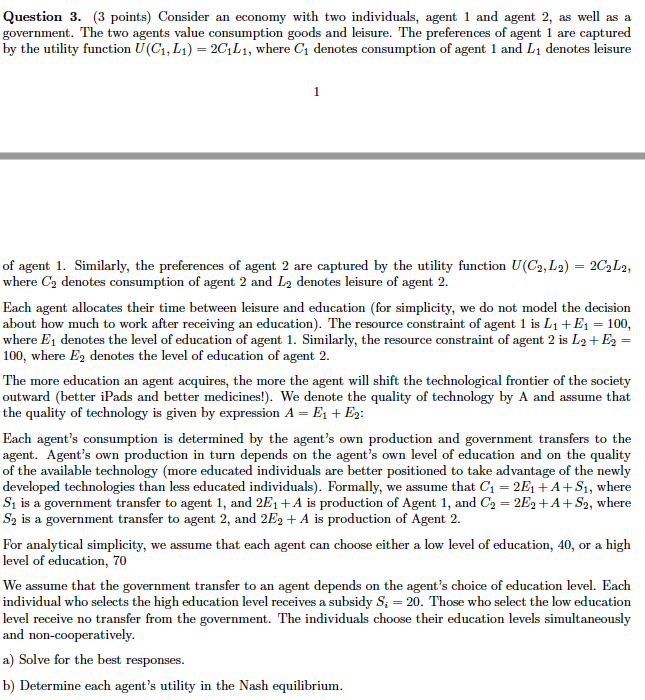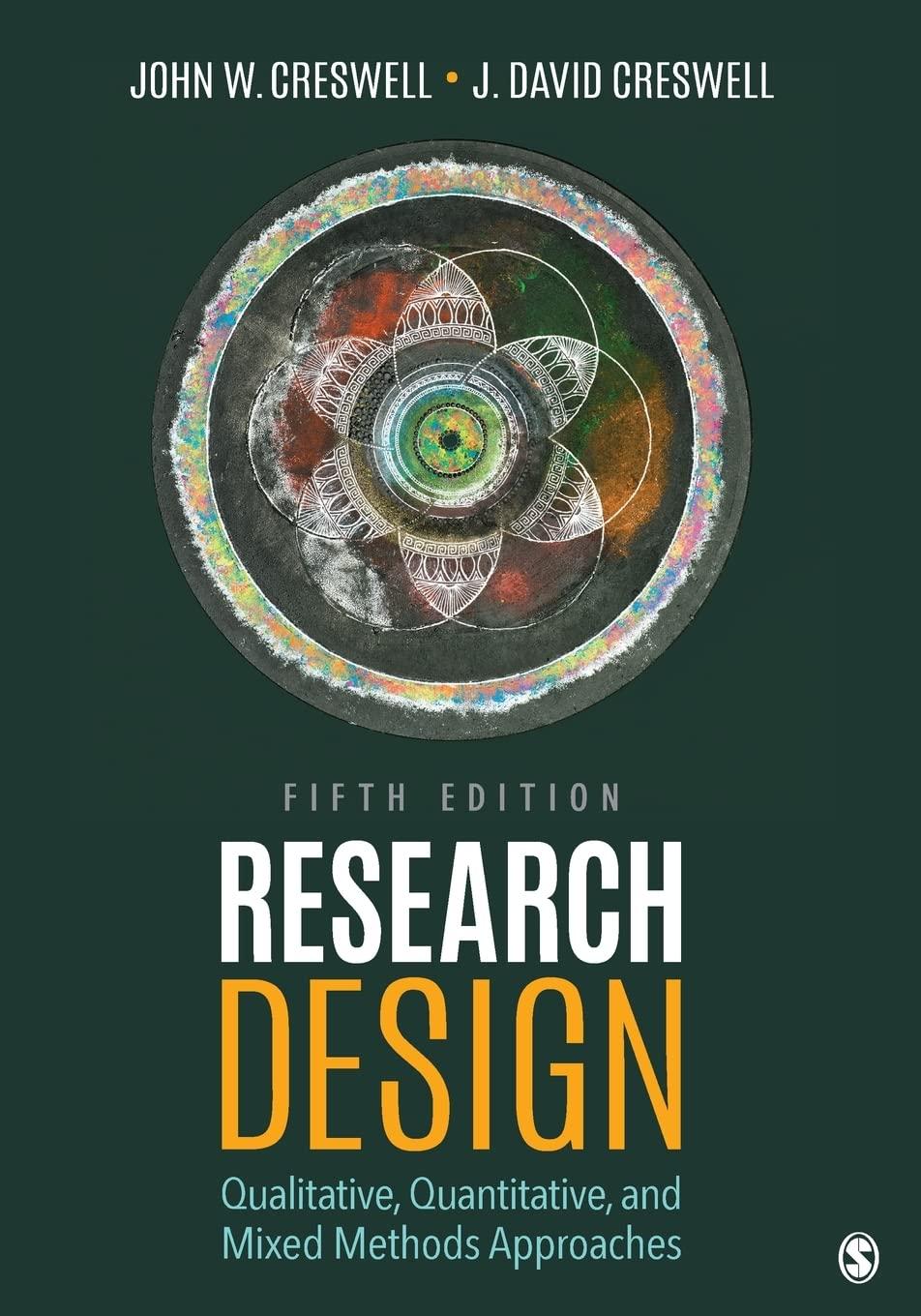Question
Consider an economy with two individuals, agent 1 and agent 2, as well as a government. The two agents value consumption goods and leisure. The
Consider an economy with two individuals, agent 1 and agent 2, as well as a
government. The two agents value consumption goods and leisure. The preferences of agent 1 are captured
by the utility function U(C1,L1) = 2C1L1, where C1 denotes consumption of agent 1 and L1 denotes leisure of agent 1. Similarly, the preferences of agent 2 are captured by the utility function U(C2,L2) = 2C2L2,
where C2 denotes consumption of agent 2 and L2 denotes leisure of agent 2.
Each agent allocates their time between leisure and education (for simplicity, we do not model the decision
about how much to work after receiving an education). The resource constraint of agent 1 is L1 +E1 = 100,
where E1 denotes the level of education of agent 1. Similarly, the resource constraint of agent 2 is L2+E2 =
100, where E2 denotes the level of education of agent 2.
The more education an agent acquires, the more the agent will shift the technological frontier of the society
outward (better iPads and better medicines!). We denote the quality of technology by A and assume that
the quality of technology is given by expression A = E1 + E2:
Each agent's consumption is determined by the agent's own production and government transfers to the
agent. Agent's own production in turn depends on the agent's own level of education and on the quality
of the available technology (more educated individuals are better positioned to take advantage of the newly
developed technologies than less educated individuals). Formally, we assume that C1 = 2E1 +A+S1, where
S1 is a government transfer to agent 1, and 2E1+A is production of Agent 1, and C2 = 2E2+A+S2, where
S2 is a government transfer to agent 2, and 2E2 + A is production of Agent 2.
For analytical simplicity, we assume that each agent can choose either a low level of education, 40, or a high
level of education, 70
We assume that the government transfer to an agent depends on the agent's choice of education level. Each
individual who selects the high education level receives a subsidy Si = 20. Those who select the low education
level receive no transfer from the government. The individuals choose their education levels simultaneously
and non-cooperatively.
a) Solve for the best responses.
b) Determine each agent's utility in the Nash equilibrium
.

Step by Step Solution
There are 3 Steps involved in it
Step: 1

Get Instant Access to Expert-Tailored Solutions
See step-by-step solutions with expert insights and AI powered tools for academic success
Step: 2

Step: 3

Ace Your Homework with AI
Get the answers you need in no time with our AI-driven, step-by-step assistance
Get Started


